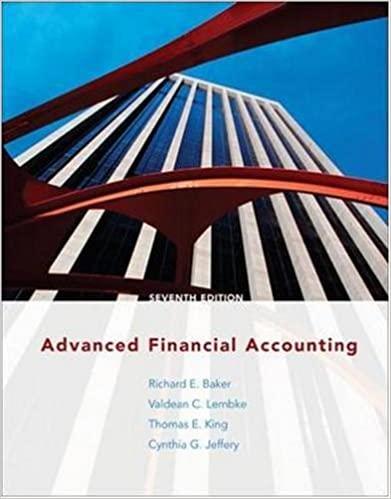Court plc has a defined benefits pension scheme for all its employees. Based on actuarial advice the
Question:
Court plc has a defined benefits pension scheme for all its employees. Based on actuarial advice the company has previously made contributions of £2 million per annum to the pension fund, being 10% of pensionable earnings. The average remaining service lives of the company’s existing employees is ten years and pensionable earnings will continue at their present level.
An actuarial valuation of the fund as at 1 January 1991 has revealed a surplus of
£3 million (i.e. the actuarial value of the pension fund’s assets exceeds the actuarial value of the liabilities). The surplus has arisen solely because the investment performance of the pension fund has been better than anticipated. The actuary has suggested to the company the following funding options:
(a) Reduce contributions from 10% to 7.5% for the next ten years; or
(b) Have a one year pension holiday and reduce contributions to 9% in the following nine years; or
(c) Receive a refund of £3 million now and retain the 10% contribution.
All of these options can be assumed to comply with the requirements of the Taxes Acts
(including Finance Act 1986) concerning pension fund surpluses.
In advance of a board meeting, the finance director of Court plc wishes to consider the impact of the various options on the accounts of the company and has asked you to prepare appropriate analyses building up to the average annual profit and loss account charge in accordance with SSAP 24 under each option for the next ten years. Also for each option the finance director wishes to know the balance sheet effect, if any.
Requirements Note: In parts (i) and (ii), ignore taxation and the interest effect in respect of pension contributions advanced or deferred.
(i) Calculate the average annual charge to the profit and loss account of Court plc in respect of pension costs for the ten years commencing 1 January 1991 under each of the above options (a),
(b) and (c).
For each option, (a),
(b) and (c), detail the balance sheet effects of accounting for pension costs.
(ii) Assume that Court plc follows option
(b) above with effect from 1 January 1991 and that a further actuarial valuation as at 1 January 1996 leads the actuary to recommend reducing the pension contribution to 8% for 1996 only (with continuing contributions at 9%); under these assumptions calculate the profit and loss account charge for pension costs in each of the fifteen years commencing 1 January 1991, and the balance sheet provision at the end of each of those fifteen years. The average remaining service lives of existing employees can be assumed to remain at ten years.
(6 marks)
(iii) Set out, in note form, the practical accounting and presentational considerations, including taxation, which you would recommend the board of directors to take into account when deciding on an appropriate course of action in relation to the pension fund surplus as at 1 January 1991. (6 marks)
ICAEW, Financial Accounting 2, December 1991 (18 marks)
Step by Step Answer:

Advanced Financial Accounting
ISBN: 9780073526744
7th Edition
Authors: Richard Baker, Valdean Lembke, Thomas King, Cynthia Jeffrey





